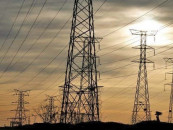Average wages and labour productivity
Real wages grow faster than productivity as govt raises minimum wage every year

For the outgoing fiscal year, the inflation target was set at 8% by the government. However, abnormal increases in global commodity prices, especially crude and edible oil, pushed up domestic prices, as Pakistan is a net importer of these essential items.
According to the seventh chapter of Pakistan Economic Survey 2021-22, the Consumer Price Index (CPI) in April 2022 stood at 13.4% on a year-on-year (YoY) basis, which was up from 12.7% in the previous month and 11.1% in April 2021.
The survey cites that the labour force increased from 65.5 million in 2017-18 to 71.76 million in 2020-21 and the number of employed people increased from 61.71 million to 67.25 million during the same period. There were still 4.51 million people from the labour force who could not secure gainful employment in FY21.
Pakistan is a country that has been hard hit due to the current economic situation. The question, however, emerges: are these figures correct in the backdrop of cash crunch, double-digit interest rates, forex reserves dipping down and the ongoing Russia-Ukraine war?
To understand employment ratio, we first need to understand the mechanism through which labour income share and informality in labour income are calculated.
Normally, the labour income share is calculated as the compensation of employees over total economy (GDP) multiplied by total employment, from market prices and factor costs. The adjusted labour share with GDP means depending on variables of factor cost (minus taxes and plus subsidies).
The latter is more meaningful, since taxes do not represent any kind of return on capital or land. The unadjusted labour share is calculated as total compensation over GDP and the adjusted labour share increases the unadjusted labour share by the ratio of self-employment.
However, there is an ambiguity in aggregate labour share where more informality occurs. This is why trends in the aggregate labour share need to be interpreted with some caution due to a number of measurement issues.
For instance, the evolution of labour share in the private sector is likely to be shaped by different forces than the corresponding aggregate for the public sector, where measurement of output and factor share raises more complex issues, such as the number of hours worked for those employed and self-employed.
In contrast, the private sector represents a more consistent aggregate and measurement issues regarding the labour share are less problematic. In simpler words, it is either sole enterprise earning or it is fixed share from the profit (ideally) of the enterprise.
The trends in the labour share are to a large extent driven by the comparative evolution of average wages and labour productivity. Under most circumstances, when average wages increase more rapidly than average labour productivity, the labour share increases.
Conversely, when the growth in average wages lags the growth in labour productivity, the result is a decline in the labour share. This relationship can become more complex if the proportion of wages in total compensation changes over time, or if different deflators are used to deflate wages and output per worker.
No such indicators are used in any survey to understand comparative trends of labour share vis-a-vis productivity. Despite this omission, the number of persons employed increased from 61.71 million to 67.25 million from 2018 to 2022.
A number of advanced countries such as the US, Japan and Germany have seen wage growth significantly lag behind productivity growth, resulting in a decline in labour share.
However, this does not mean that there is slower growth of average labour income with respect to aggregate productivity within all industries.
In fact, in many countries, for instance Pakistan, real wages grew faster than productivity. Government increases the minimum real labour wage every year in its budget.
The question is how to define the labour income share, especially in an informal economy like Pakistan. A key query is whether decline of the aggregate labour share is due to the result of a structural shift away from labour-intensive activities or whether it is the result of decline in labour share within each industry?
Pakistan’s labour force seems to be enjoying growth but only on paper. As documented by Labour Force Survey 2020-21, 36.5% of the labour force earns less than Rs15,000 per month.
The increase in employment ratio amid inflation can be attributed to the narrative of “something is better than nothing”. Thus, workers end up working on wage levels which are defined by the World Bank’s poverty and inequality platform as indicative of the low-income group – $2.15 per day.
The writer is a senior research assistant at Institute of Development and Economic Alternative (IDEAS)
Published in The Express Tribune, December 19th, 2022.
Like Business on Facebook, follow @TribuneBiz on Twitter to stay informed and join in the conversation.



















COMMENTS
Comments are moderated and generally will be posted if they are on-topic and not abusive.
For more information, please see our Comments FAQ